Money in Laos: A Tourist Guide to ATMs, Cards and Exchange
This post may contain affiliate links. If you make a purchase using one of these links, I may receive a small reward at no extra cost to you. See my Disclosure Policy for more information.
In a certain weird way, Laos feels like nobody should be using money there. It’s rural, rugged, slow. Everything is simple and easy-going. But you still need some money, right?
So here’s a practical guide to tourist money for Laos. Everything about ATMs, exchanging currency, and paying by card. From a backpacker for backpackers, although the information here is valid for all sorts of travelers.
| Best foreign currency to bring | USD, THB |
| Where to exchange? | Exchange bureaus |
| ATMs without a fee | None. BCEL has the lowest fee |
| Can you withdraw USD directly? | No |
| Visa or Mastercard? | Use Mastercard for better rates |
| Can you use Revolut, Wise, Monese, etc? | Yes! |
| Cash or card? | Cash |
All this and more in this guide to money in Laos!
Currency in Laos
The currency in Laos is the Lao Kip with code LAK.
The Lao Kip was pretty stable until 2019 but has since been dropping in value (which is good for you, the foreign traveler, but it sucks for the Laotians).
Just like money in Indonesia and money in Vietnam, the Lao Kip has a lot of zeroes. Try to disregard the last 3 – that makes money management easier.
In this guide, I use k (as in kilo) instead of the last 3 zeroes (000), thus 10.000 = 10k.
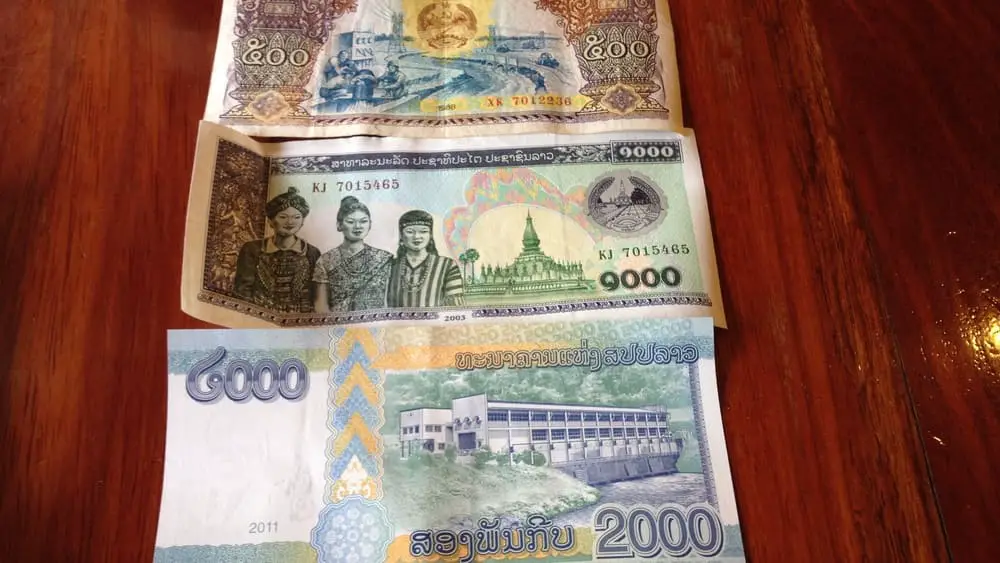
No coins are in circulation in Laos anymore.
The banknote denominations are 500, 1000, 2000, 5000, 10.000, 20.000, 50.000, and 100.000 (<5$) being the largest banknote. This means that just like with Indonesian money, you will be carrying a thick stack of banknotes in your wallet. Thankfully, Laos is just as cheap.
Can you use your card in Laos?
You can seldom use your foreign card to pay in Laos. Card payments are accepted at very few places.
Cards are accepted at high-end international hotels and some souvenir shops in big cities like Vientiane and Luang Prabang.
Expect to be charged a 2-3% card payment fee, too.
Everywhere else in Laos, you will need cash. Imagine going on a jungle trek to isolated villages around the Bolaven Plateau, and the locals take out a POS terminal. Right, it ain’t happening.
ATMs in Laos
You will not struggle to find ATMs in cities. Luang Prabang and Vientiane have plenty, Luang Namtha, Vang Vieng, and Huay Xai have a few too. Nong Khiaw has at least 2.
If the town isn’t too isolated, there will be at least 1 ATM.
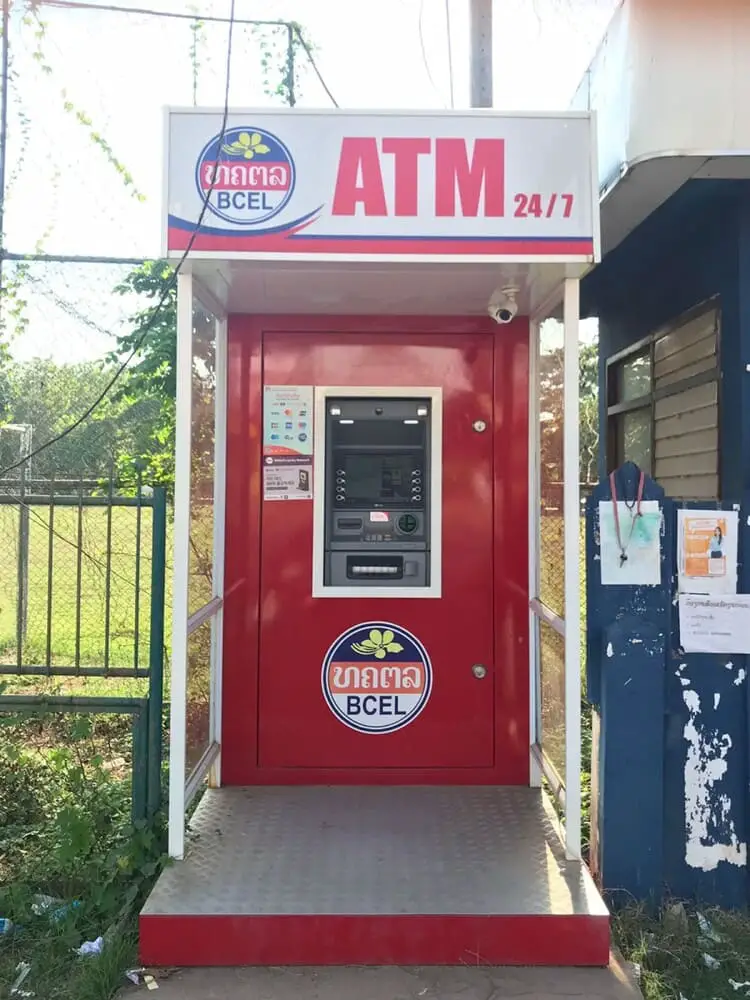
VISA cards are accepted by all ATMs. Mastercards are mostly accepted, but some ATMs (for example, Indochina Bank) may reject them. Maestro will get accepted at BCEL ATMs, but may not be at others. American Express is almost universally not accepted.
The maximum withdrawal amount on ATMs is between 1 and 3 million LAK. The maximum is at Indochina Bank ATMs at 3 million.
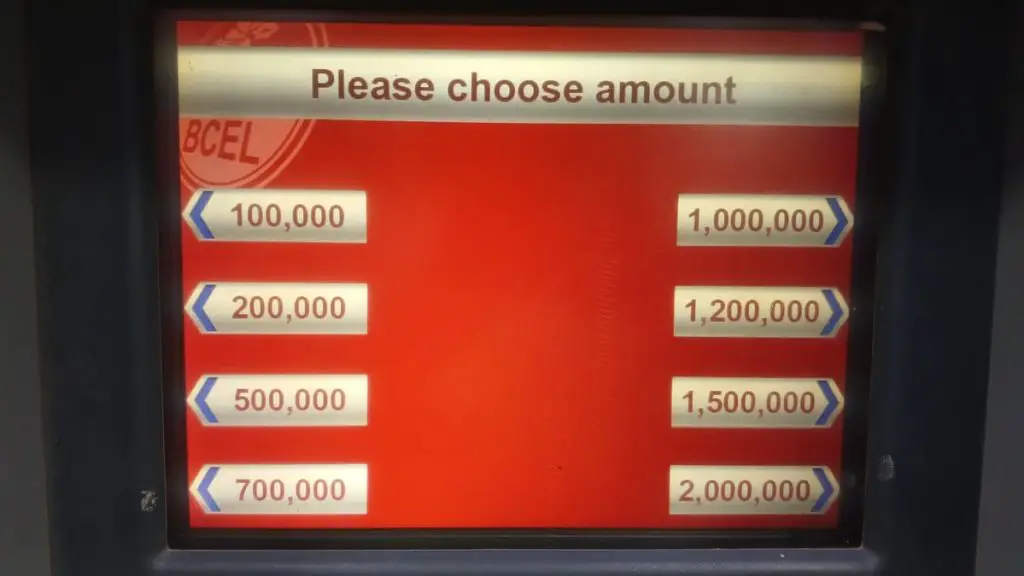
Withdrawal Fees
Quick answers:
- BCEL charges 30.000 and allows withdrawals up to 2.000.000. Accepts all cards.
- Indochina Bank charges 40.000 and allows up to 3.000.000. Accepts only VISA cards.
ALL ATMs in Laos charge a withdrawal fee.
This is on top of any fees charged on your end by your bank. The latter you can avoid by using a FinTech solution like Revolut, Curve, or Monese.
The fee is almost always 30.000 LAK regardless of the withdrawn amount, except for JDB bank, which charges 3% with a 40.000 LAK minimum.
BCEL used to be the best bank to withdraw money in Laos. However, after they increased their fee and decreased the maximum withdrawable limit, their fee of 30.000 LAK comes to 1.5% if you withdraw 2.000.000 LAK.
On the other hand, Indochina Bank allows you to withdraw up to 3.000.000 LAK for a fee of 40.000 LAK, which is 1.33%. However, their ATMs only accept VISA cards! Visa cards give much worse rates for LAK exchanges (explored below)!
That’s why the best ATM to withdraw money in Laos is BCEL, but only if you use a Mastercard to withdraw. All other banks charge at least 40.000 LAK and have lower withdrawal limits, making them worse.
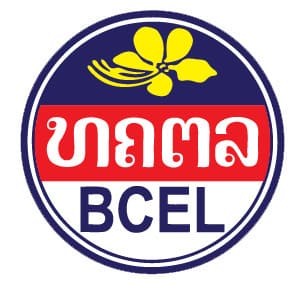
Indochina Bank is not as widespread as BCEL, which is the most common bank in Laos. In big cities like Vientiane, Luang Prabang, Pakse, Savannakhet, and Luang Namtha, you will find at least 1 ATM from each bank.
Smaller cities and villages may have only a handful of ATMs. If there’s only one ATM in a town, it will likely be BCEL.
Problems with ATMs in Laos
The ATMs in Laos are notorious for being pretentious.
Poor maintenance, outdated software, insufficient cash stocked, and the generally poor banking system result in various ATM problems.
Card swallowed
It hasn’t happened to me personally, but I read reports from people complaining their cards were swallowed almost daily.
It’s highly recommended that you withdraw from ATMs connected to a bank branch and on working days.
This way, should it happen to you, it’s easy to retrieve the card. You will need your passport to prove that you own the card (the names should match; sometimes other IDs are accepted too).
Otherwise, call the bank and ask for support.
As for what to do in the meantime? Always have at least 2 cards while traveling and carry emergency cash in an easily convertible currency (USD and EUR are safe bets worldwide).
Charged but no money dispensed
I have experienced this issue. It’s frustrating but not overly troublesome.
The most likely reason is that the ATM doesn’t have enough cash inside.
The transaction will be reversed within a few days (in my case, it was the next day) and the money returned to your account. There is no need to contact the bank.
Charged twice
This has also happened to me. The most likely reason is glitchy ATM software.
Once again, you don’t need to do anything, and the second transaction will be refunded within a few days.
Visa vs Mastercard Exchange Rates
The last time I went to Laos, I withdrew 3.000.000 LAK from an ATM of Indochina Bank using my Revolut Visa card.
I was baffled by the horrible rate at which euros were exchanged for Kip. My bank did the exchange – I didn’t use automatic conversion!
I did another withdrawal from a BCEL ATM using my Monese Mastercard. The rate was a whopping 6% better than what I got on my Visa.
I first thought the problem was Revolut. It may be. But then others reported using their Visa cards in Laos with similar results – bad rates. I am now confident that the problem is the Market exchange rates that the Visa card system uses.
Since the Lao Kip does not have a big international trading volume, the spread between Buy and Sell can be as high as 16%! It appears that Visa is indeed using this ridiculous spread, whereas Mastercard uses a standard 1-2% spread.
This adds another layer of complexity about withdrawing money in Laos. Long story short – withdraw using Mastercard for better rates – this removes Indochina Bank as an option and leaves BCEL as the best ATM in Laos.
Digital Money, Payment Apps, and QR Codes
A new way to spend money in Laos was introduced recently. One that many countries in the region already use extensively – paying by scanning a QR code.
As a foreigner, you CAN take advantage of the relative ease and convenience of paying with your phone. All you have to do is download the EzyKip App, register, and load some money.
You can even withdraw from ATMs by selecting the option for EzyKip and scanning the QR code.
Here comes the unpleasant twist – the top-up fee on EzyKip is between 2.1% and 2.8% depending on the card. This is higher than the 1.5% you would pay when withdrawing the maximum at BCEL ATMs.
The good news is that you can withdraw whatever is left in your account at the end of your trip.
Exchanging Money in Laos
You don’t have to exchange money in Laos if you have a card with low or no fees.
But I understand if you carry cash when traveling and exchange it for the local currency. It’s normal and safe. So here’s how to be prepared for exchanging money in Laos.
What currency to bring
If you’re getting your visa on arrival, payment in cash is mandatory. You can pay with US dollars (everywhere), Thai Baht (for borders with Thailand), or Vietnamese Dong (for borders with Vietnam).
The VoA costs 40$. If you don’t have a passport-sized photo, that’s another 1$. If crossing during a weekend or public holiday, that’s another 1$.
Your banknotes must be IMMACULATE! Wrinkles, creases, cuts, and any damage will result in rejection. US banknotes older than 2009 will also be rejected.
Alternatively, you can get the Lao eVisa for 50$.
As with any other country in Southeast Asia, the US dollar is the best foreign currency to carry to Laos.
You will have no issues exchanging these currencies in bigger cities:
- Euro;
- British Pound;
- Thai Baht;
- Chinese Yuan;
- Japanese Yen;
- Swiss Franc;
- Australian Dollar;
- New Zealand Dollar;
- Canadian Dollar;
- Singaporean Dollar;
If your currency is not on the list, it’s better to change it to something more widely accepted. You cannot go wrong with US dollars.
Where to Exchange Money
You can exchange at:
- Banks (Not that many around. Bring your passport!)
- Airports (worst rates)
- Exchange bureaus in a city (Best rates)
- Hotels (just okay)
- Tour Agencies (bad rates considering there’s usually a bureau nearby)
- Dodgy guy at the market (you’re setting yourself up to be scammed)
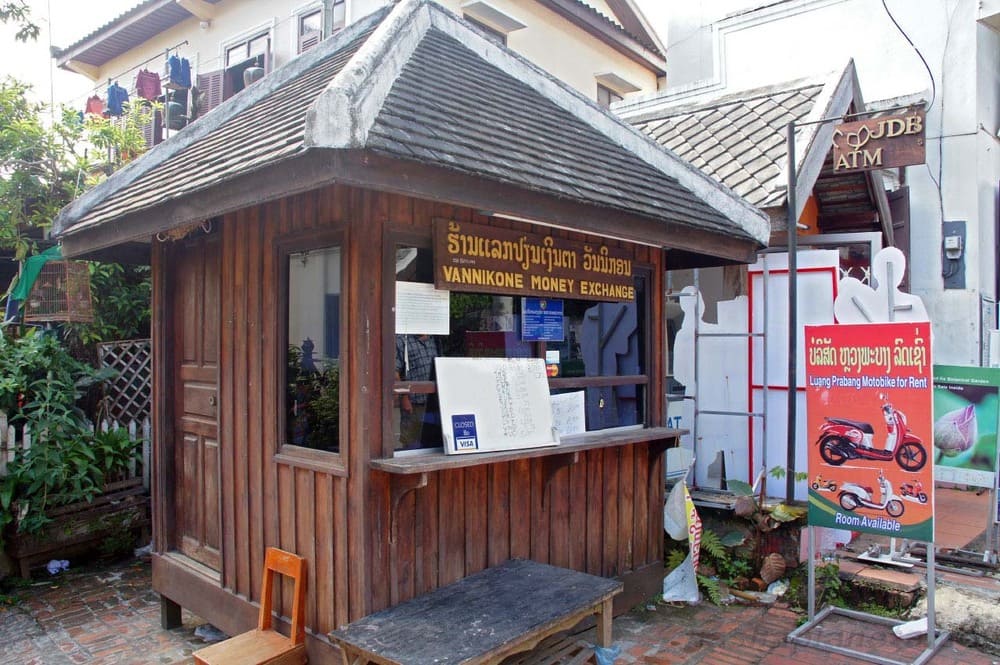
Tips for Changing Money in Laos
Most of these are common sense and not any different from other countries. Here are my top tips:
- Higher denominations = higher rates;
- Damaged banknotes = lower rates + fee (if accepted at all);
- Don’t accept foreign banknotes with ANY damage (if changing Kip back to USD, for example);
Talking about changing LAK back to USD, it can be difficult. Many travelers have reported extreme bureaucracy or outright refusals when trying to get rid of Lao Kip. Don’t withdraw too much LAK in the first place, and if you must exchange back into USD, be patient and persistent.
Pro Tips and Common Scams
I’ve compiled some smart tips from my travels to Laos and fellow travelers’ confessions to give you a heads-up.
- Never take any banknotes with tears or holes; Lao Kip banknotes are often old and fragile. Anything that’s torn will likely not be accepted by someone else, so don’t take it either.
- Mentally ignore the last 3 zeroes to make calculations easier. 50.000 is just 50k, 20.000 is 20k.
- Know the multiple of your currency. Say you use US dollars and 10.000 LAK is around 0.5$. Your multiple is 5. If the price of something is 40.000 LAK, ignore the zeroes, multiply by 5, and you have 20, i.e., 2$. In this example, it’s easier to just divide by 2, but for other multipliers, this trick is handy.
How much cash to bring to Laos?
This depends on your way of traveling and your budget. Laos is cheap, and what you need, you can get from the ATM.
My advice is to have at least 200$ just in case something goes wrong with your bank cards and you need emergency cash until you sort it out.
When I went to Laos, I had exactly that much stashed away, but since I exclusively used my Revolut card, I didn’t have to exchange a single time.
Example prices
All prices are in Lao Kip (LAK). Laos is experiencing moderate inflation combined with a slow devaluation of the Kip, which means that prices may have risen by the time you’re reading this.
10.000 LAK (10k) ~= 0.45 USD.
- Papaya Salad: 20-30k;
- Khao Soi: 25 – 40k;
- Lao self-made barbeque at a restaurant: 35k (that one was super cheap and amazing too);
- Passionfruit cooler: 10 – 20k;
- Sugarcane juice: 10 – 15k;
- Can of beer (supermarket): 8 – 15k;
- Can of beer (bar/night market): 15 – 30k;
- Museums: 30 – 50k;
- Waterfalls on the Bolaven Loop: 10 – 20k;
- Kong Lor Cave boat ride: 200k per person;
- 1-day motorcycle rental: 120 – 180k;
- Ticket from Luang Prabang to Nong Khiaw: 200k;
- High-speed train from Luang Prabang to Vientiane: 320k;
- 1-hour full-body massage: 100-200k;
- Budget hostel: 50 – 180k (usually breakfast included);
- Guesthouses: 100 – 250k
- Mid-range hotels – 300 – 800k;
- Jungle trekking group tour – 500k – 1 million per day;
- Travel Insurance from SafetyWing (covers you in Laos): ~45 USD for a 3-week trip.
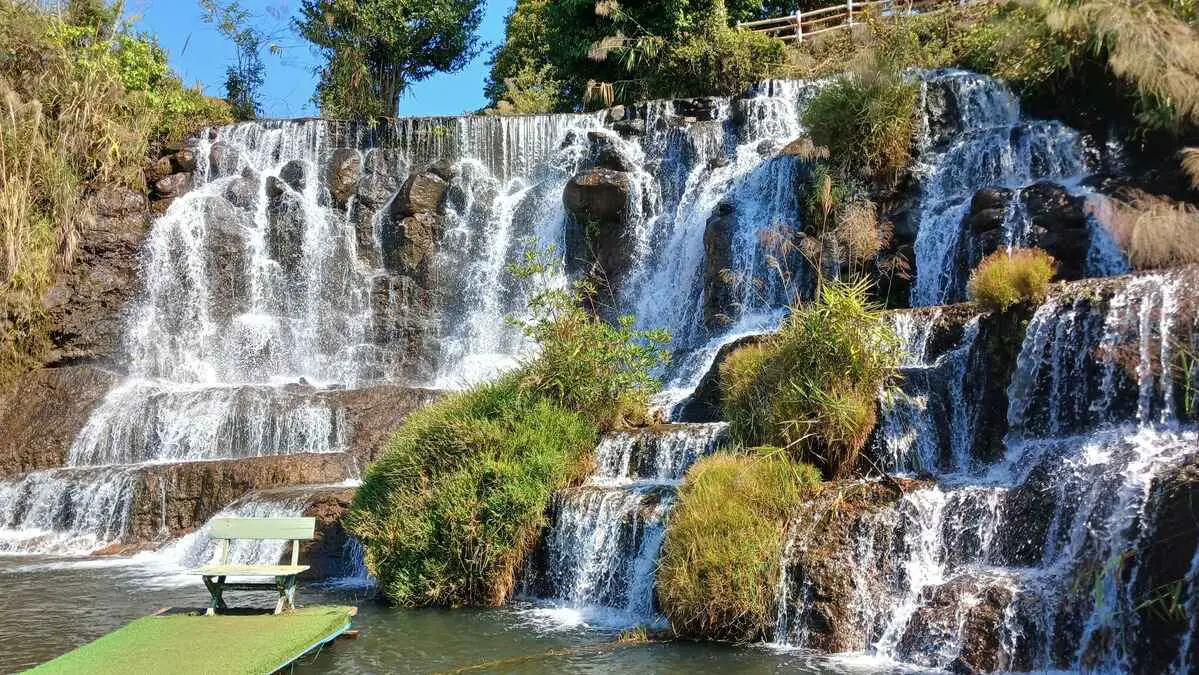
Bargaining
Bargaining is common in Laos, especially in traditional markets.
In the eyes of locals, every foreigner is rich. Thus, the first price you hear will be double or more than what the locals pay.
It’s not uncommon to get a price 10 times higher than the actual!
That being said, I’ve found Lao locals and vendors to be way kinder than their Vietnamese counterparts and not overprice too much.
As a foreigner, you will never get the price for locals. But if you bargain playfully and politely, you can easily get a 50% discount most of the time.
The rule of thumb is that if there’s a price tag, don’t bargain. This is not entirely true as merchants put tags on stuff at (for example) the Luang Prabang night market and then end up selling them for less. Just ask for a discount 🙂
Tipping
Tipping is not part of the culture in Laos.
It’s not expected and it’s not common. Lao people don’t tip.
However, tipping is very much appreciated and will bring good fortunes (and new friends) your way!
Frequently Asked Questions
Let’s answer some of the most popular questions about money in Laos.
What is the ATM withdrawal limit in Laos?
ATMs have a withdrawal limit between 1 and 3 million Lao Kip (49 to 121 USD).
The ATM with the highest withdrawal limit is Indochina Bank at 3 million LAK for VISA cards and BCEL at 2 million LAK for Mastercard.
What is the ATM with the lowest fees in Laos?
For Mastercard, the best ATM is BCEL. For a withdrawal of 2 million LAK, the fee is 30.000 (1.5%).
For Visa cards, the best ATM is Indochina Bank. For a withdrawal of 3 million LAK, the fee is 40.000 (1.33%). However, Visa cards seem to charge an abysmal LAK exchange rate!
Can you use US dollars in Laos?
Generally, no, but with a few exceptions.
Visa on arrival is payable in US dollars. You can pay in other currencies, but the exchange rate will be quite bad.
Tours and jungle treks are often advertised in US dollars, and payment in such is expected, although not strictly mandatory.
Zip lines, Via Ferrata experiences, and various adventure sports are advertised in US dollars and payable in USD or Lao Kip.
For most daily transactions, only Lao Kip is accepted.
Can you use Revolut in Laos?
Yes, Revolut cards work in Laos. Both VISA and Mastercard work. You can withdraw from ATMs and pay at POS terminals with your Revolut card.
Similar fintech apps like Wise, Monese, Curve, N26, and Starling also work there.
If you are going to other Southeast Asian countries, you may want to read my money guides for them too:
- Tourist Guide to Money in Thailand
- Tourist Guide to Money in Vietnam
- Tourist Guide to Money in Cambodia
- Tourist Guide to Money in the Philippines
- Tourist Guide to Money in Myanmar
- Tourist Guide to Money in Malaysia
- Tourist Guide to Money in Indonesia
- Tourist Guide to Money in Timor Leste

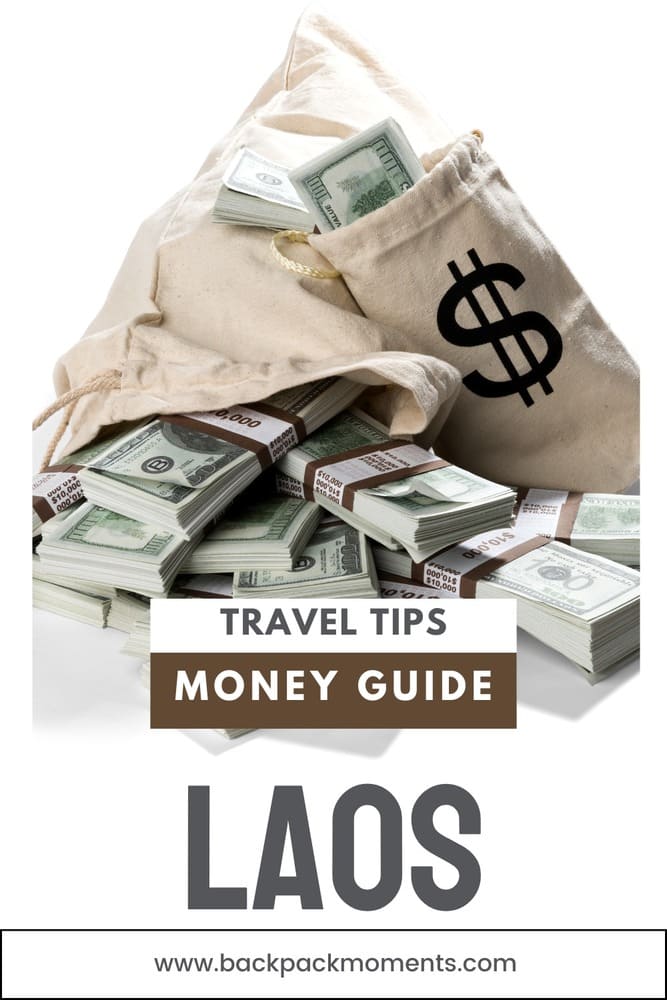

I have been many times to Laos, mostly for short stays up to 15 days. As a Swiss i do not need a visa for stays up to 15 days. I always use USD in cash for travelling in Laos, easy to exchange and best exchange rates compared to other foreign currencies. In many guesthouses and hotels you can pay directly in USD, but be aware of the applied exchange rate. Don’t exchange a big amount at one time, because inflation is very high in Laos. Your kip is loosing value every day.
Thank you Alois,
I agree that USD is best to carry in Laos. However, it’s always more economical to exchange it first, then pay in LAK. The exchange rate the guesthouses/tour operators, etc will give you will never match a good bureau or a bank.
-S.
Went to an ATM today and avoided my Visacard and used revolut MasterCard instead. They gave me an exchange rate even worse of what VISA is telling you in their currency converter. Behind the Questionmark in the app you find a description that they use Morningstar or someone else for exchange. Lost almost 8€ in a 2Mil transaction. (10%). Don’t use Revolut in Laos!
Oh Kurt, I am so sorry about that!
I did the same mistake when I was in Laos, I just thought it was Visa, not Revolut.
Revolut recently changed the way they decide the exchange rate and now claim they “set it themselves”. It is not as good as it was a couple of years ago. Not for most currency pairs and even worse for rare currencies, although they are still mostly competitive. Unfortunately, that’s the lifecycle of a fintech unicorn. I still believe Revolut is a good app with many benefits but as this goes to show – a pinch of salt is necessary.
-S.
I’m impressed by the quality of your article ! In particular, the astonishingly bad conversion for Visa card holders is seldom mentioned elsewhere (it’s a recurring topic on Laos travel groups).
However I’m surprised that you mention that the money is stuck on Ezykip. Indeed, there’s a “withdraw” option on the app. I never actually used it but it’s supposed to send back the money to your card.
Yeah, I think you are right about the withdraw button. I will update accordingly. Thanks!
thank you, Simon, for your very useful information* !
maybe it could be useful to know that on 25th March of this year I succeeded to change back my last Lao Kips (except two notes for souvenir :D) at an exchange office in the Thai side of the “Friendship Bridge” between LAO PDR and the Kingdom of Thailand….this bank, or better exchange office, was immediately after passing the bridge BEFORE the Thai passport control and a huge portrait (the first of many) of H.M. the King (Rama X)…the clerk changed without any fuss my LAK to bahts and changed at a very good rate (I didn’t find a similar rate in Bangkok where I arrived after an overnight train from Nong Khai) my euros to THB but only 60 euros (three 20-E notes), he refused other 60 euros (three 20-E notes) because “not very good” ! so, even Euros can be rejected not only dollars 😀 (btw, someone -not in Laos- gave me a 5-dollar note in real shameful condition, my fault…this note is lost 😀 never I succeeded to use it and never I’ll succeed in the future, I am afraid)
*I’ve read your Central Asian guides (in November I plan to visit Central Asia) and really they are a mine of information ! thanks
Hi Massimo!
Yeah, friendship bridges may have someone willing to exchange LAK into THB at an acceptable rate. But if you still have LAK in Bangkok it’s better keeping it as a souvenir – the rate is horrendous.
Similar with other borders like the one with Cambodia or the multiple with Vietnam.
I am actually a bit surprised he rejected euros. Must’ve been wonky and worn out.
As for the 5$ note – it may be unusable in Indochina but you can try your luck in Timor Leste or the good old US.
Let me know if there’s anything I can help with additionally about Central Asia. It’s lovely there and if you don’t come from a post-Communist country, quite different and exciting!
-S.
You can check the ripoff VISA exchange rate directly on their website:
https://www.visa.com.au/support/consumer/travel-support/exchange-rate-calculator.html
I’m in Lao now. Beware Lao-Viet ATMs. I asked for 3,000,000LAK and it would have given it to me, but with a fee of 134,000LAK!
Also some businesses will say you can pay with Mastercard but must convert to USD first (at a bad rate of course, 20,000:1). It’s not true, ask them to try charging LAK.
I have been surprised how many places will allow you to pay with credit card, certainly more than I thought. Always with a 3% surcharge of course, but paying with a Mastercard +3% can be a lot more favourable than paying with/withdrawing cash from a Visa card (yes as you say Visa hits you with about 7% margin).
Don’t try any other ATMs except for BCEL and Indochina bank 😉
Your advice is helpful, thanks Brian 🙂
Did you check whether BCEL do a dynamic currency conversion automatically without giving an option to withdraw in local currency?
I was charged over 8% at an ATM and it’s not from my bank, as they will give close to the visa rate.
Bcel not informing you before making the withdrawal is pretty much a scam. Never had this anywhere else in the world…
This is not BCEL. I was also charged a bad rate by Revolut in Laos but a very good rate by Monese.
Some banks use a horrible spread of up to 15%. Since the Lao Kip is not traded a lot internationally, shit like this tends to happen.
But yeah, it’s not dynamic conversion, it is a high margin from your bank due to low trading volumes and a big difference between sell/buy.
Ok thanks for replying and the information.
But I have been using ATMs in Laos for a decade and this year is the first time that I have seen any “spread” like this.
My banks do not charge fees for using overseas ATMs, and are usually very close to the Visa or MasterCard rate. I have messaged them asking for more information anyway.
I will be curious to see what they tell you and will be grateful if you share with me (email me if not a comment) for the benefit of others 🙂
Thanks Simon – really helpful
Thank you, useful information. I am heading there in 3 weeks
Really appreciate you posting this info. Can I assume that Lao ATMs are like most of the world and will spit out the largest denomination notes – 50k and 100k only?
Most ATMs (BCEL definitely) disperse only 100.000 LAK notes.
If the ATM disperses lower denominations, it will let you know and some even ask what notes you want.
One ATM I saw even had 10.000 and 20.000 LAK notes.
Thanks Simon – really helpful 🙂
This was so helpful as we are teachers and traveling to Laos this Chinese New Year and were worried about what currency to bring and use. Thanks!